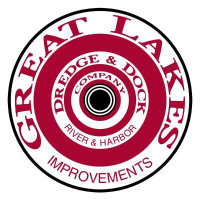
Great Lakes Dredge & Dock Corp
NASDAQ:GLDD


| US |

|
Johnson & Johnson
NYSE:JNJ
|
Pharmaceuticals
|
| US |

|
Berkshire Hathaway Inc
NYSE:BRK.A
|
Financial Services
|
| US |

|
Bank of America Corp
NYSE:BAC
|
Banking
|
| US |

|
Mastercard Inc
NYSE:MA
|
Technology
|
| US |

|
UnitedHealth Group Inc
NYSE:UNH
|
Health Care
|
| US |

|
Exxon Mobil Corp
NYSE:XOM
|
Energy
|
| US |

|
Pfizer Inc
NYSE:PFE
|
Pharmaceuticals
|
| US |

|
Palantir Technologies Inc
NYSE:PLTR
|
Technology
|
| US |

|
Nike Inc
NYSE:NKE
|
Textiles, Apparel & Luxury Goods
|
| US |

|
Visa Inc
NYSE:V
|
Technology
|
| CN |

|
Alibaba Group Holding Ltd
NYSE:BABA
|
Retail
|
| US |

|
3M Co
NYSE:MMM
|
Industrial Conglomerates
|
| US |

|
JPMorgan Chase & Co
NYSE:JPM
|
Banking
|
| US |

|
Coca-Cola Co
NYSE:KO
|
Beverages
|
| US |

|
Walmart Inc
NYSE:WMT
|
Retail
|
| US |

|
Verizon Communications Inc
NYSE:VZ
|
Telecommunication
|
Utilize notes to systematically review your investment decisions. By reflecting on past outcomes, you can discern effective strategies and identify those that underperformed. This continuous feedback loop enables you to adapt and refine your approach, optimizing for future success.
Each note serves as a learning point, offering insights into your decision-making processes. Over time, you'll accumulate a personalized database of knowledge, enhancing your ability to make informed decisions quickly and effectively.
With a comprehensive record of your investment history at your fingertips, you can compare current opportunities against past experiences. This not only bolsters your confidence but also ensures that each decision is grounded in a well-documented rationale.
Do you really want to delete this note?
This action cannot be undone.

| 52 Week Range |
6.6
12.73
|
| Price Target |
|
We'll email you a reminder when the closing price reaches USD.
Choose the stock you wish to monitor with a price alert.

|
Johnson & Johnson
NYSE:JNJ
|
US |

|
Berkshire Hathaway Inc
NYSE:BRK.A
|
US |

|
Bank of America Corp
NYSE:BAC
|
US |

|
Mastercard Inc
NYSE:MA
|
US |

|
UnitedHealth Group Inc
NYSE:UNH
|
US |

|
Exxon Mobil Corp
NYSE:XOM
|
US |

|
Pfizer Inc
NYSE:PFE
|
US |

|
Palantir Technologies Inc
NYSE:PLTR
|
US |

|
Nike Inc
NYSE:NKE
|
US |

|
Visa Inc
NYSE:V
|
US |

|
Alibaba Group Holding Ltd
NYSE:BABA
|
CN |

|
3M Co
NYSE:MMM
|
US |

|
JPMorgan Chase & Co
NYSE:JPM
|
US |

|
Coca-Cola Co
NYSE:KO
|
US |

|
Walmart Inc
NYSE:WMT
|
US |

|
Verizon Communications Inc
NYSE:VZ
|
US |
This alert will be permanently deleted.
 Great Lakes Dredge & Dock Corp
Great Lakes Dredge & Dock Corp
Great Lakes Dredge & Dock Corp
Investor Relations
Great Lakes Dredge & Dock Corp. engages in the provision of dredging services. The company is headquartered in Houston, Texas and currently employs 413 full-time employees. The company went IPO on 2006-12-27. The firm provides dredging services in the East and Gulf Coasts of the United States and around the world. Its dredging generally involves the enhancement or preservation of the navigability of waterways or the protection of shorelines through the removal or replenishment of soil, sand or rock. Domestically, its work generally is performed in coastal waterways and deep-water ports. Its United States dredging market consists of four primary types of work: capital, coastal protection, maintenance and rivers and lakes. The company operates three principal types of dredging equipment: hopper dredges, hydraulic dredges and mechanical dredges. Its domestic dredging fleet is positioned on the East and Gulf Coasts, with a smaller number of vessels positioned on the West Coast, and with many of the rivers and lakes dredges on inland rivers and lakes.

Great Lakes Dredge & Dock Corp. engages in the provision of dredging services. The company is headquartered in Houston, Texas and currently employs 413 full-time employees. The company went IPO on 2006-12-27. The firm provides dredging services in the East and Gulf Coasts of the United States and around the world. Its dredging generally involves the enhancement or preservation of the navigability of waterways or the protection of shorelines through the removal or replenishment of soil, sand or rock. Domestically, its work generally is performed in coastal waterways and deep-water ports. Its United States dredging market consists of four primary types of work: capital, coastal protection, maintenance and rivers and lakes. The company operates three principal types of dredging equipment: hopper dredges, hydraulic dredges and mechanical dredges. Its domestic dredging fleet is positioned on the East and Gulf Coasts, with a smaller number of vessels positioned on the West Coast, and with many of the rivers and lakes dredges on inland rivers and lakes.





























 You don't have any saved screeners yet
You don't have any saved screeners yet
